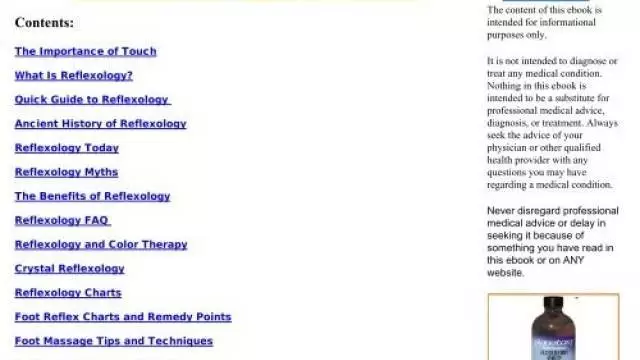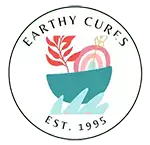

Reflexology is an alternative therapy practiced using pressure points on the feet and hands to promote overall body wellness. Reflexology works on the principle that every organ, gland and part of your body has specific reflexes mapped onto its sole and palm.
The Art of Reflexology
Reflexology is a therapeutic technique that involves applying pressure to specific reflex points on feet, hands and ears. Reflexology has long been proven effective at treating health conditions including migraines, sinus issues, hormonal imbalances, breathing disorders, digestive issues and circulatory conditions among other ailments.
Reflexology is a science based upon the belief that our bodies contain vital energy or life force which circulates throughout each cell and tissue of our bodies, giving life force an outlet. When this flow becomes blocked it can lead to imbalance in those parts of the body related to it causing discomfort or imbalance in other areas. Reflexology practices stem from this belief and correspond different organs with various pressure points on feet, hands and ears for maximum benefit.
Studies indicate that when pressure points are stimulated, they send messages to their associated organs in order to ease congestion and promote healing. This can be achieved by applying gentle yet firm pressure on these reflex points to bring relief to areas experiencing discomfort or congestion. A practitioner is then able to pinpoint them.
Reflexology works by improving blood circulation to organs targeted, thus increasing oxygen levels throughout the entire body and speeding metabolism – helping cells grow more quickly and heal more effectively.
Touching one’s feet is an entrancing experience that can both calm the brain and initiate healing messages throughout the body. Massage therapy often brings significant mood-lifting and stress-relief effects because its soothing nature allows the mind to rest easier, helping your body respond more efficiently in terms of healing needs.
Reflexology sessions typically begin with a practitioner discussing your health and any problems or concerns you have, before applying light but firm pressure to specific reflex points on your feet to alleviate any discomfort that you might be feeling; you should experience mild soreness but this should pass quickly.
Reflexology therapy uses soothing music, subdued lighting and aromatherapy to induce relaxation. However, it should be kept in mind that reflexology remains an alternative form of therapy and its efficacy may still be debatable; for best results and safety seek medical advice before beginning any new treatments.
The Science of Reflexology
Reflexology is a popular healing practice and often considered safe and effective method for relieving stress, improving sleep quality, treating various conditions and relieving soreness. Reflexology has a long history and can be found across numerous countries around the world.
Reflexology is based on the theory that there are pressure points on feet, hands and ears that correspond with specific areas of the body and send energy back through them, helping rebalance and heal any areas in need of healing.
This concept began with William Fitzgerald’s theory of “zone therapy”, introduced into Western medicine during the early 1900s. According to this concept, all parts of the body could be mapped onto specific points on feet and hands and treated using pressure techniques.
He believed that any tenderness on the feet indicated an imbalance elsewhere in the body, which has become part of modern reflexology to explain pressure applied on specific parts of feet and hands. This theory of “zone therapy” continues today when applied through reflexology treatments on specific zones on feet and hands.
Reflexology involves using thumb and finger pressure on specific points on the foot that they believe to correspond with certain parts of the body, in order to keep qi flowing freely throughout your system and maintain health and wellbeing.
Over time, scientists have conducted extensive studies on the physiology behind touch as an effective healing modality. Studies have demonstrated that touch releases endorphins which help counter stress hormones while providing relaxation and peace.
Reflexology operates under the principle that there are nerves connecting the skin to internal organs and that any touch the body receives will trigger its nervous system, thus enabling therapists to feel any difference in client muscles after working with them.
Reflexology allows them to identify any areas of tension within the body that require treatment, enabling therapists to work directly on those spots. Reflexology has proven effective at improving circulation and decreasing inflammation for those suffering chronic illnesses; additionally it may help ease chemotherapy patients’ pain during and post treatment.
The Benefits of Reflexology
Reflexology is an ancient healing art that can be used to treat various conditions. The practice relies on the concept that certain points on our hands and feet correspond with specific organs or systems in the body, with pressure applied directly onto these points providing healing benefits to both organs and systems alike. When pressure is applied on these points, the body begins the healing process itself.
Reflexology’s benefits can be immense, from increased energy and circulation improvements, stress relief and pain management, improved sleep patterns and migraine prevention and reduction, all the way through to managing headaches caused by stress or other psychological factors.
Reflexology Can Aid Relaxation – Reflexology has been shown to induce relaxation through neural pathways, helping your body back into its natural Circadian rhythm, which in turn contributes to healthy sleeping patterns.
#2 – Stimulation of Nervous System – Reflexology has been shown to stimulate the central nervous system, helping the brain process information more efficiently, which in turn improves cognitive function and physical reactions faster. This may increase cognitive performance while speeding physical reactions faster.
#3 Alleviates Pain and Inflammation – Reflexology has been shown in many studies to relieve both localized pain and inflammation throughout the body, aiding immune function and speeding recovery from injuries or surgeries.
#4: Cleansing of Urinary Tract – Reflexology has been shown in multiple studies to be an effective means of clearing urinary tract infections and helping prevent urinary tract blockages, as well as treating bladder conditions.
Reflexology Can Alleviate Discomfort During Cancer Treatment – Reflexology can alleviate discomfort during cancer treatments by helping the immune system, improving sleep patterns and relieving anxiety during treatments. Furthermore, reflexology increases oxygen flow to improve cell regeneration more rapidly.
When seeking out a reflexologist, be sure to choose someone with formal professional training and state licensure – this will guarantee they possess all of the required knowledge for safe and effective treatments.
The Techniques of Reflexology
Reflexologists have developed various techniques to assist their clients, such as pressure, manipulation and touch. Reflexologists use these methods to stimulate nerve reflex activity throughout the body, improve circulation and decrease stress levels.
Reflexology is a technique based on the notion that feet, hands and ears are connected to organs, glands and joints throughout the body; when applied pressure to certain points by a reflexologist it helps restore equilibrium to these organs and joints.
Reflexologists use their fingers or thumbs to apply pressure to reflex points on feet and hands which correspond with different areas of the body, such as reflex points found on feet and hands that correspond with specific body parts. When this is done, vital energy (known as Qi in Chinese) is supposed to flow directly to those body areas thereby helping maintain equilibrium and prevent illness in our bodies.
Massage allows an individual to relax and feel renewed, as well as being used to ease pain relief and promote digestion.
Reflexologists typically apply pressure by “thumbwalking”, bending and straightening while maintaining constant pressure across the foot being worked. This method remains popular worldwide; however, new approaches and techniques are rapidly emerging due to sharing among therapists of their experiences and clinical observations.
Reflexologists increasingly utilize other methods, including the use of acupressure points and energy therapies; this trend has gained more traction as research into whole systems evolves.
Reflexology practitioners frequently utilize zone therapy as one of their techniques, first introduced by Dr William Fitzgerald in the 1920s. According to this theory, tenderness on one reflex may indicate a problem elsewhere in one or more vertical zones of the body.
An alternative theory suggests that practitioner touch can help relax and soothe the central nervous system, creating relaxation. Similar to massage, but more intense in its effects.
Reflexology is often considered helpful for treating various health issues, such as depression, anxiety and stress. Reflexologists believe its numerous health benefits have a positive impact on their clients’ overall health and well-being.
